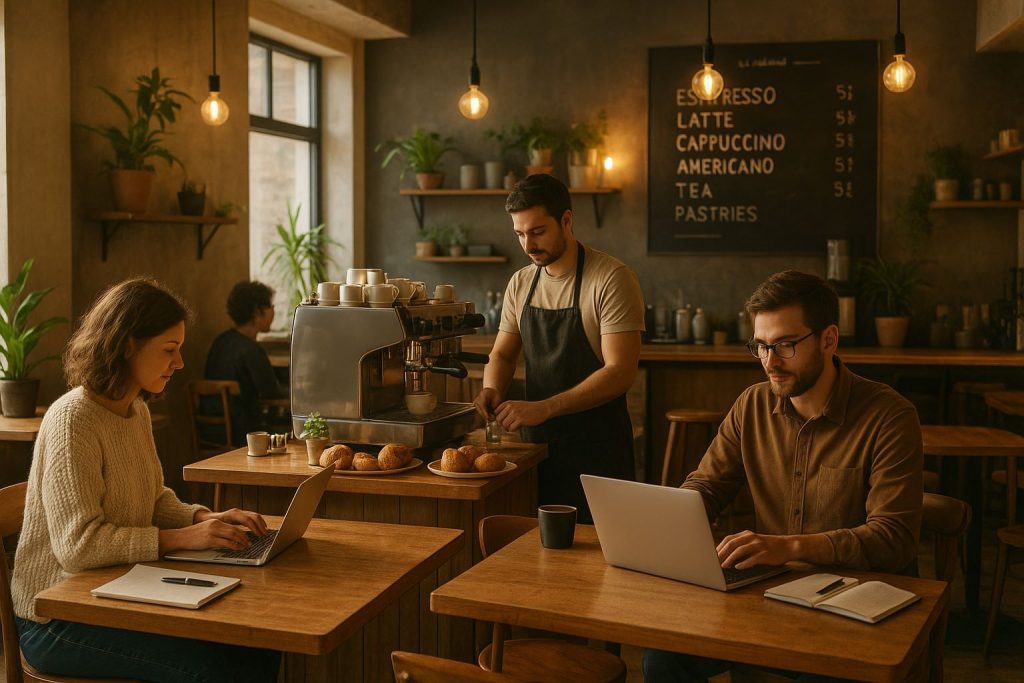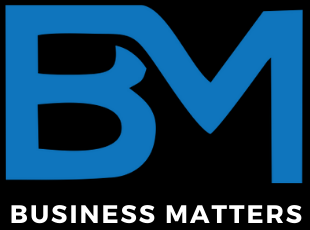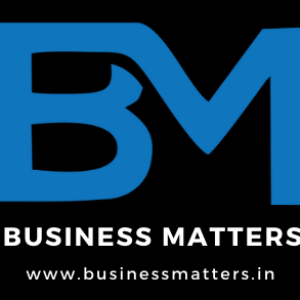Starting a cafe is more than just brewing coffee and serving snacks. In today’s dynamic food and beverage industry, a cafe can become a hub of social interaction, a creative space for artists, or a sanctuary for those seeking a unique culinary experience. If you’re passionate about food, beverages, and creating memorable experiences, launching a cafe can be both fulfilling and profitable. This guide dives deep into cafe startup ideas, strategies for success, and innovative concepts that will help you stand out in a competitive market.
Understanding the Cafe Business Landscape
The cafe industry has evolved dramatically over the past decade. Cafes are no longer just places to drink coffee; they are now destinations offering unique experiences. Before diving into specific startup ideas, it’s essential to understand the current trends and market demands.
The Rise of Specialty Cafes
Specialty cafes focus on high-quality, artisanal products. From hand-drip coffee to gourmet pastries, these cafes emphasize craftsmanship and quality over quantity. Customers are willing to pay a premium for superior flavors, unique recipes, and personalized experiences.
The Influence of Social Media
Instagram and TikTok have transformed cafes into visual experiences. Aesthetic interiors, creatively plated dishes, and themed cafes attract young audiences who share their experiences online. Cafes that embrace social media-friendly designs often see higher footfall and brand recognition.
Health-Conscious Consumer Behavior
More consumers are seeking healthier alternatives. Cafes offering vegan options, gluten-free pastries, organic ingredients, or sugar-free beverages are increasingly popular. Catering to this segment not only meets market demand but also positions your cafe as innovative and mindful.
Identifying Profitable Cafe Startup Ideas
Creating a unique concept is crucial for standing out in a crowded market. Here are some innovative cafe startup ideas that cater to diverse consumer interests.

Specialty Coffee Cafe
A specialty coffee cafe focuses on high-quality coffee, sourced ethically from premium coffee-growing regions. Offering unique brewing methods, such as siphon, pour-over, or cold brew, can attract coffee enthusiasts. Training staff to deliver a memorable experience through barista skills also enhances customer loyalty.
Dessert-Focused Cafe
Cafes centered around desserts attract sweet-tooth customers. From artisanal cakes and pastries to unique dessert fusions like croissant sandwiches and waffle tacos, dessert cafes offer endless creative opportunities. Seasonal desserts and Instagram-worthy presentation can create a buzz and encourage repeat visits.
Themed Cafes
Themed cafes create immersive experiences around a concept. Popular themes include book cafes, board game cafes, cat cafes, or retro-style cafes. A well-executed theme can create a strong brand identity and draw customers seeking a unique experience beyond food and beverages.
Vegan or Health-Focused Cafe
Health-conscious cafes cater to growing demand for vegan, keto, gluten-free, and organic options. Offering smoothies, cold-pressed juices, protein-rich snacks, and plant-based meals attracts customers who prioritize health. Partnering with local organic suppliers adds authenticity and trust.
Co-Working Cafes
Combining workspaces with cafes is a rising trend. Co-working cafes provide Wi-Fi, charging stations, and quiet areas for freelancers and remote workers. These cafes generate consistent daytime traffic and can offer subscription-based memberships for additional revenue.
Art and Music Cafes
Art and music cafes offer a creative atmosphere for artists, musicians, and performers. Hosting live performances, art exhibitions, or poetry sessions can attract a niche audience and build a loyal community around your cafe. These cafes often become cultural hubs in their cities.
Mobile or Pop-Up Cafes
Mobile cafes, food trucks, or pop-up cafes reduce overhead costs while testing new markets. They are perfect for entrepreneurs looking to enter the cafe industry with minimal investment. Mobility allows flexibility in location, participation in events, and brand experimentation.
Eco-Friendly Cafes
Eco-conscious cafes focus on sustainability. Using biodegradable packaging, minimizing food waste, sourcing locally, and offering plant-based menus appeal to environmentally aware consumers. Such cafes often attract media attention and loyal customers who value sustainability.
Dessert and Beverage Pairing Cafes
Pairing desserts with specialty beverages like coffee, tea, or wine creates a premium experience. Offering tasting menus or pairing events can create a sense of exclusivity. This concept works well in urban areas with a sophisticated audience looking for unique culinary experiences.
Community-Centric Cafes
Community cafes focus on local engagement. Hosting workshops, charity events, or skill-sharing sessions can strengthen ties with the neighborhood. This approach creates a loyal customer base while enhancing brand reputation.
Steps to Launching a Successful Cafe Startup
While having a creative idea is crucial, execution is equally important. Here’s a roadmap for launching your cafe successfully.
Conduct Market Research
Understanding your target market is the first step. Identify potential customers, competitors, and market gaps. Consider factors like demographics, spending habits, preferences, and location demand. This research informs your concept, menu, pricing, and marketing strategy.
Define Your Unique Selling Proposition
Your cafe needs a unique identity that differentiates it from competitors. It could be an exclusive beverage, a themed environment, or exceptional service. A clear USP ensures customers remember your brand and develop loyalty.
Develop a Solid Business Plan
A detailed business plan outlines your cafe’s mission, vision, target audience, marketing strategies, menu design, operational plan, and financial projections. It acts as a roadmap and is essential for securing funding from investors or banks.
Choose the Right Location
Location is critical to cafe success. High foot traffic areas like business districts, college campuses, or shopping streets are ideal. Consider visibility, accessibility, rent, parking facilities, and competition when finalizing your location.
Design Your Cafe Atmosphere
Ambiance plays a major role in attracting and retaining customers. Interior design should align with your theme and target audience. Comfortable seating, lighting, music, and decor create an environment where customers want to spend time.
Curate a Memorable Menu
Your menu should reflect your concept and target audience. Focus on quality, consistency, and presentation. Offering signature items that cannot be found elsewhere helps build a loyal customer base. Seasonal menus and limited-time offerings create excitement and urgency.
Source Quality Ingredients and Equipment
Sourcing high-quality ingredients ensures the taste and freshness of your offerings. Partner with reputable suppliers and consider local sourcing. Investing in reliable equipment ensures efficiency and consistency in food and beverage preparation.
Hire and Train Staff
Staff professionalism directly impacts customer experience. Hire passionate and skilled employees and provide comprehensive training in service standards, food preparation, hygiene, and customer engagement. Encouraging a positive work culture ensures lower turnover rates and better service.
Implement Marketing Strategies
Effective marketing attracts new customers and builds brand loyalty. Utilize social media, local advertising, influencer collaborations, and community engagement. Creating a strong online presence with appealing visuals and engaging content amplifies your reach.
Leverage Technology
Technology improves efficiency and customer experience. Point-of-sale systems, online ordering, delivery partnerships, digital loyalty programs, and mobile apps streamline operations and enhance customer satisfaction.
Innovative Cafe Concepts for Modern Entrepreneurs
Entrepreneurs looking to disrupt the cafe industry can experiment with innovative ideas that cater to evolving consumer behavior.
Hybrid Cafe Concepts
Combining multiple concepts like book cafes with specialty coffee, or art cafes with co-working spaces, attracts a diverse audience. Offering complementary services enhances customer value and revenue streams.
Subscription-Based Cafes
Subscription models provide steady income. Customers pay a monthly fee for unlimited coffee, exclusive menu items, or access to events. This model builds loyalty and predictability in cash flow.
Experiential Cafes
Cafes that offer unique experiences—like coffee brewing workshops, chocolate-making classes, or themed escape rooms—provide more than food and drinks. Experiential cafes attract niche markets and create memorable customer interactions.
Tech-Integrated Cafes
Using augmented reality (AR), virtual menus, or app-based ordering systems appeals to tech-savvy audiences. Tech integration can enhance efficiency, engagement, and modernize the traditional cafe experience.
Sustainable Farm-to-Cup Cafes
Cafes that grow their own herbs, vegetables, or coffee beans on-site offer a farm-to-cup experience. This concept emphasizes sustainability and transparency, appealing to environmentally conscious consumers.
Cultural and Fusion Cafes
Fusion cafes combine flavors, ingredients, or culinary techniques from different cultures. Offering global cuisines in a casual cafe setting caters to adventurous eaters and creates a unique market position.
Key Challenges and How to Overcome Them
While the cafe industry offers lucrative opportunities, it also comes with challenges. Understanding these hurdles and preparing solutions ensures long-term success.
Competition
The cafe market is competitive, with new entrants regularly opening. Differentiation, innovation, and exceptional service help overcome competition and attract a loyal customer base.
High Operational Costs
Rent, labor, ingredients, and equipment contribute to high operational expenses. Careful financial planning, cost optimization, and menu pricing strategies maintain profitability.
Changing Consumer Preferences
Trends in food and beverages change rapidly. Staying updated with market trends, offering seasonal menus, and adapting to customer feedback ensures relevance.
Staffing Challenges
Hiring and retaining skilled staff can be difficult. Creating a positive work environment, offering training, and providing incentives improve employee retention and service quality.
Regulatory Compliance
Food safety regulations, licensing requirements, and health inspections are critical. Ensuring compliance prevents legal issues and maintains customer trust.
Marketing and Branding Strategies for Cafe Success
A strong marketing and branding strategy enhances visibility and attracts customers.
Social Media Marketing
Platforms like Instagram, Facebook, and TikTok allow cafes to showcase their offerings, ambiance, and events. Visual storytelling and user-generated content boost engagement and attract new customers.
Influencer Collaborations
Collaborating with local influencers and food bloggers expands reach. Influencers’ endorsements provide credibility and attract followers to visit your cafe.
Loyalty Programs
Rewarding repeat customers with discounts, freebies, or special access strengthens loyalty. Digital loyalty programs simplify tracking and incentivize frequent visits.
Event Hosting
Hosting workshops, music nights, or community events drives traffic and builds a sense of community. Events differentiate your cafe from standard coffee shops.
Online Reviews and Reputation Management
Encourage satisfied customers to leave positive reviews on platforms like Google, Yelp, and TripAdvisor. Addressing negative feedback promptly enhances credibility and trust.
Financial Planning for Cafe Startups
Financial planning ensures sustainability and profitability.
Startup Costs
Cafe startup costs include location rent, renovation, equipment, initial inventory, licenses, marketing, and staffing. Budgeting accurately prevents overspending and cash flow issues.
Revenue Streams
Revenue comes from in-house sales, takeaway, delivery, events, merchandise, and subscriptions. Diversifying income sources stabilizes earnings.
Pricing Strategy
Pricing should reflect quality, target audience, and competition. Offering premium items alongside budget-friendly options attracts a wider customer base.
Break-Even Analysis
Calculating the break-even point helps determine the time required to cover expenses. This analysis guides pricing, marketing, and operational decisions.
Profit Margin Management
Monitor ingredient costs, labor expenses, and operational efficiency to maintain healthy profit margins. Regular financial audits and cost optimization strategies ensure sustainable growth.
Conclusion
Starting a cafe is a journey of creativity, strategy, and passion. By understanding market trends, exploring innovative cafe startup ideas, executing a solid business plan, and delivering exceptional customer experiences, your cafe can thrive in a competitive market. Whether you opt for a specialty coffee shop, a dessert haven, or a tech-integrated hybrid cafe, success depends on your ability to innovate, adapt, and engage with your customers.
Launching a cafe is not just about serving food and drinks; it’s about creating experiences, building communities, and leaving a lasting impression. With the right concept, planning, and execution, your cafe can become a cherished destination and a profitable business venture.

